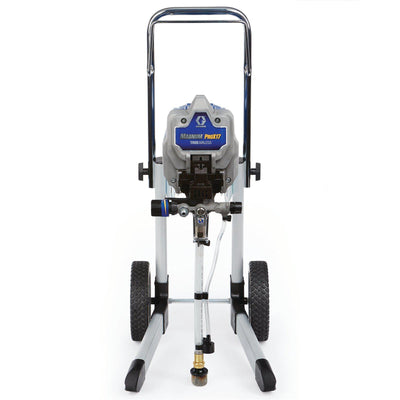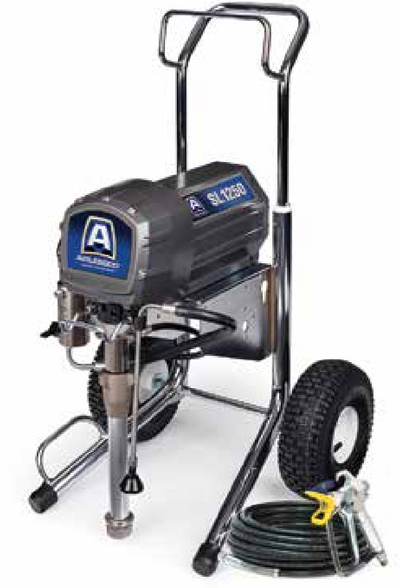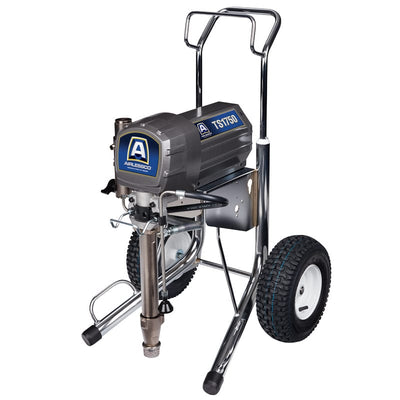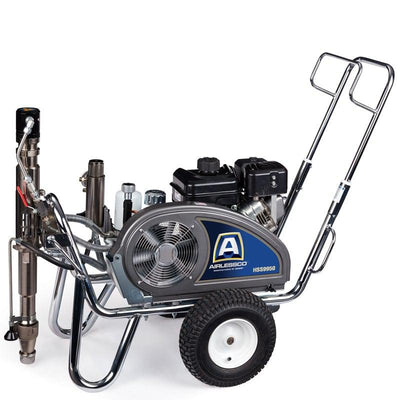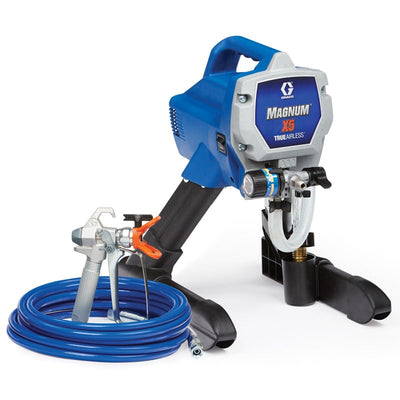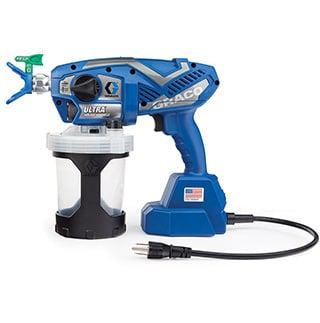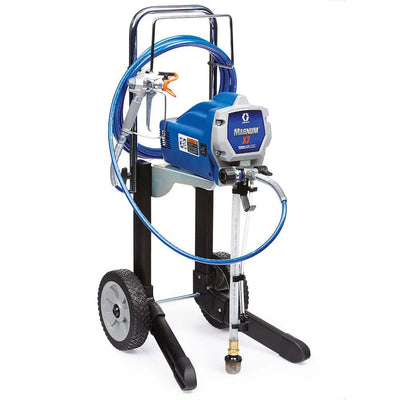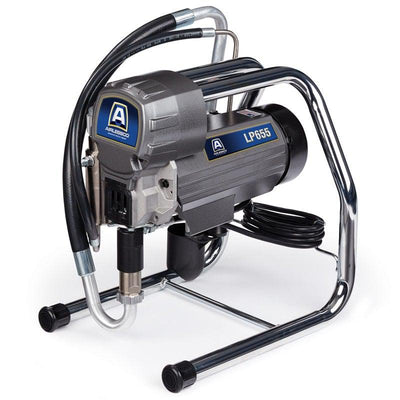Reduce Overspray When Using an Airless Paint Sprayer – A Guide
Airless Paint Sprayers are ideal for high production settings. They allow you to complete large projects in shorter periods of time. However, the high production can often come at the cost of less transfer efficiency. Transfer efficiency refers to the amount of paint that coats the product's surface vs the amount that doesn’t adhere and becomes overspray. If you are using an airless you may be wondering how you can cut down on overspray so that you can save on coating costs in your paint booth or spray with as little hanging in the air as possible. This article will focus on a few different ways you can reduce overspray when using an Airless Paint Sprayer.
Tip one – Use the lowest amount of Pressure possible to Achieve the Right Finish
An airless paint sprayer uses pressure to deliver paint through a spray gun and through a tip. By forcing the fluid pass the small opening, the coating is atomized (broken apart). This is different than spray guns that use air introduced into a fluid stream to effectively atomize a coating. The big benefit of an airless is the faster rate at which it sprays. However, because it uses high pressures when spraying, a lot of your paint can become overspray. To keep overspray to the least amount possible when using an airless paint sprayer, you should keep the pressures at which your spraying to the lowest PSI possible. This can be done by slowly adjusting the pressures that you are using with your airless sprayer. Essentially when you dial in your airless paint sprayer, you want to slowly increase the pressure that is being delivered by your sprayer until the coating starts to look appropriately atomized. Once you reach this point, you can increase the pressure a slight bit more to ensure the finish will be adequate.
Tip Two – Choose a proper airless paint sprayer tip for your product your painting
Airless paint sprayer tips come with a stated fan pattern as well as an opening size. The larger the opening, the more fluid that will be delivered, which can result in higher production. Additionally, the larger the fan pattern, the faster you can potentially cover a given product.
When considering the tip size for your airless paint sprayer, consider the size of the target you will be spraying. You will want to choose a tip size that’s fan pattern is not extraordinarily larger than the particular targets you are spraying. If your spraying a house a very wide pattern can make a lot of sense, however, if you spray numerous parts that are smaller in size you want to choose a fan pattern that does not cover a wider area than the product you are painting. Additionally, you want to choose a fluid tip opening size that is appropriate for your fan pattern and paint. If you know successive overspray with a certain opening size, you could choose a smaller opening and or a smaller pattern. The smaller pattern or smaller opening should help you reduce the amount of overspray you’re producing. Especially if you try to keep the pressure that you are spraying at as low as possible for your finish needs.
Tip three – Consider Alternative/Supplemental Application Equipment
if you have a lot of bolts or other areas that are sticking out on a given product and you notice that the overspray is excessive when you are spraying the areas that stick out. You may want to consider supplementing your airless spraying with other spray technologies. For example, you could use a spray gun like these from Binks and pressure pot or depending on your coating a gravity fed spray gun to touchup the odd areas that are sticking out which would help in giving you better control of your spray pattern which could help reduce coating waste. Additionally, if you could spray using an HVLP spray gun that would help significantly reduce coating waste as they have higher transfer efficiency than airless sprayers do.
You could also consider converting your airless paint sprayer into an air assist airless paint sprayer, which you can learn more about how to do so here. Air assist airless paint sprayers have transfer efficiencies similar to HVLP spray guns, which will help significantly reduce the amount of overspray. However, air assist airless may not potentially work with heavier body coatings.
Tip 4 – Watch your Spray Technique
A final suggestion is to watch the technique you are using while you spray. A few recommended practices to help keep overspray to a minimum include properly controlling your fan pattern of your spray so that it does not excessively overlap smaller portions that you might be spraying, as well as triggering your spray gun on and off. Triggering will help keep overspray down by not spraying paint when there’s no target to be sprayed. Controlling your fan pattern will ensure that the majority of paint you spray will be hitting the product's surface.
Conclusion
By properly controlling your technique and fluid pressures you can ensure you’re doing all the right things from a user standpoint to keep overspray to a minimum. However if these practices alone are not sufficient enough, you may want to consider trying a different size airless sprayer tip or consider a different style of spray equipment like a Binks spray Gun.

